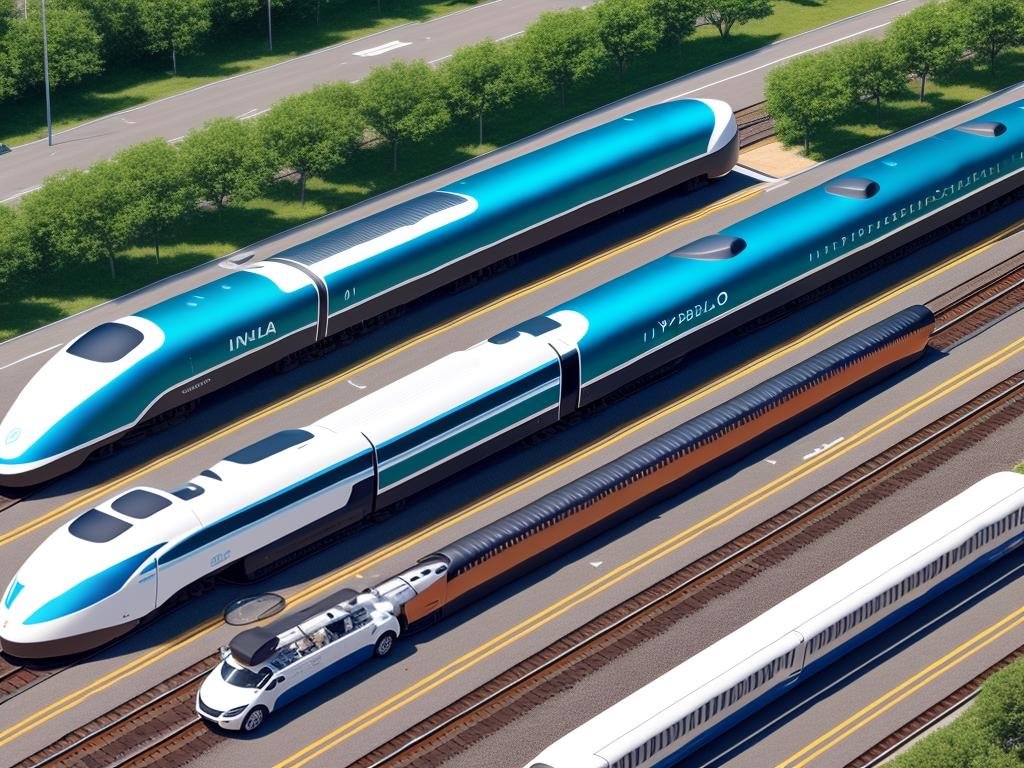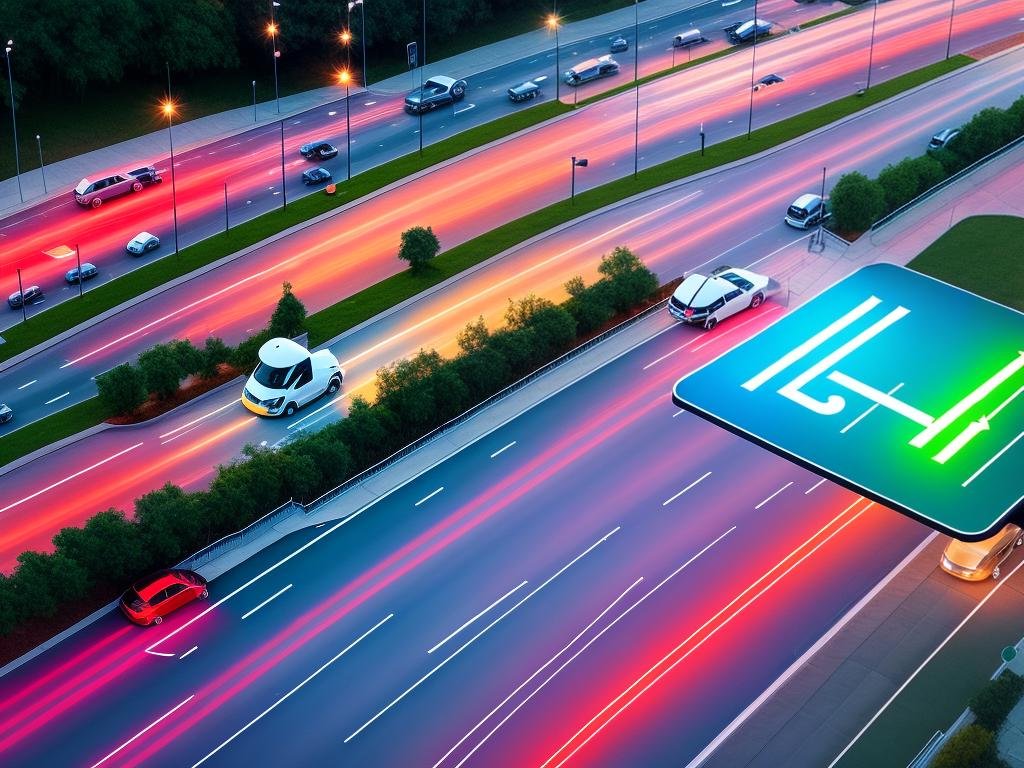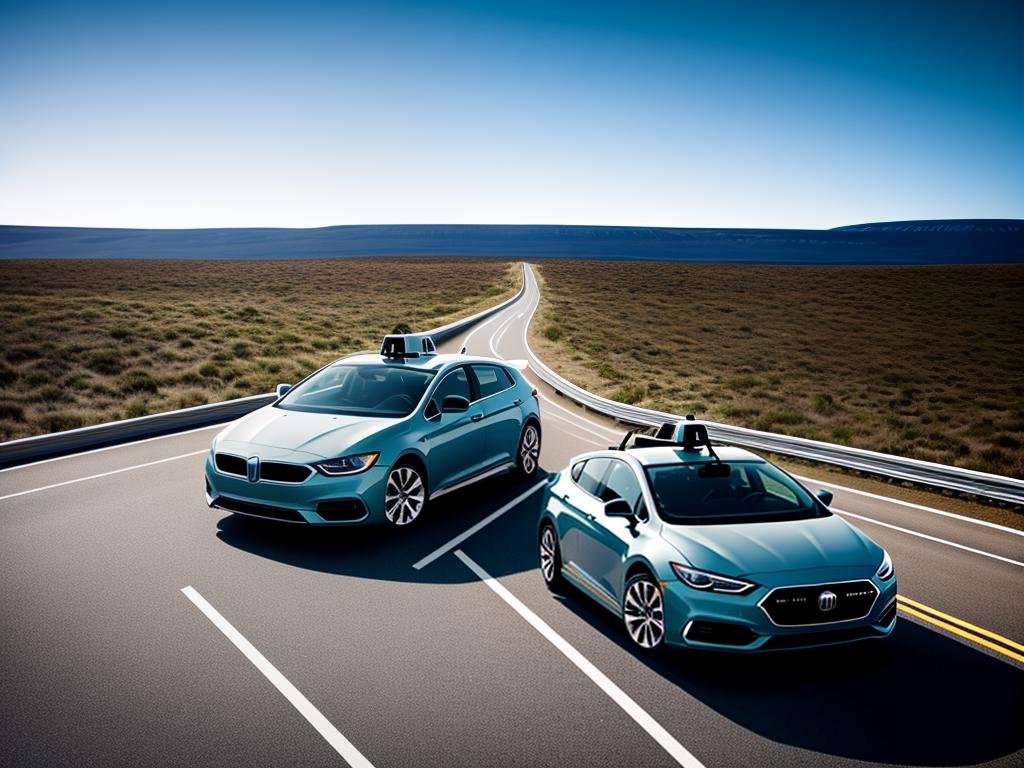Living in an era where artificial intelligence (AI) is revolutionizing various sectors, it is essential to understand its growing role in transportation. In this discourse, we demystify the concept of AI and delve into its specific implications for diverse transportation systems. Worldwide examples of AI adoption afford a clear glimpse into how this powerful technology interlaces with traffic management and vehicle automation. As we explore the impacts and benefits of AI in transportation, we’ll discover the transformative potential of AI in efficiencies and safety, and its contribution to smart, sustainable urban mobility. However, the journey towards integrating AI into transportation may be littered with hurdles, both technical and ethical—issues of data privacy, job automation, and decision-making ethics that must be carefully addressed. As the narrative unfolds, we will gaze into the future of AI in transportation, predicting emerging trends and promising advancements in this fascinating intersection.
Understanding AI in Transportation
Introducing AI and its principles
Artificial Intelligence, or AI, refers to the machinery or software that is capable of learning from experiences, adjusting to new inputs, and executing tasks that traditionally require human intelligence. Concepts like natural language processing, problem-solving, perception, and planning all play a fundamental part in AI.
At the heart of AI is the ability for machines to learn, referred to as machine learning. This involves algorithms that give computers the capacity to interpret data, learn from it, and then make predictions or decisions. Machine Learning can be supervised, where the model is trained on a data set with known inputs and outputs; unsupervised, where the model learns from unclassified data; or reinforced, involving trial and error.
Artificial Intelligence in Transportation
In the context of transportation, AI is being utilized in a multitude of ways to enhance efficiency, safety, and user experience. Here are the key areas:
Traffic Management
AI is now being used in smart traffic management systems to alleviate congestion and optimize traffic flow. These systems use AI-driven predictive technology to analyze traffic data in real time, identify patterns, and adjust traffic light sequences to maximise traffic flow. For instance, the city of Pittsburgh has adopted AI-based traffic signal control technology to reduce travel times by 25% and emissions by 20%.
Vehicle Automation
AI is increasingly central to the development of self-driving vehicles. These vehicles operate with sensors that collate data from the environment, such as the position of other vehicles, pedestrians, and road signs. AI then processes this data to control the car’s steering, acceleration, and braking.
Automated home delivery robots are another innovation. For example, Nuro’s self-driving robot delivers groceries to people’s homes in Houston, Texas. Similarly, the Starship Technologies’ robot brings food to students at George Mason University in Virginia.
Public Transit Systems
AI is also revolutionizing public transit systems by optimizing routes and schedules. For instance, Cubic Transportation Systems applies AI in its NextBus application to provide real-time passenger information, enabling commuters to plan their journeys more efficiently.
In addition, AI-powered face recognition systems are being used in public transportation in cities like Beijing to fast-track passenger boarding. Other than that, AI is also instrumental in predictive maintenance of transit vehicles, which helps detect and correct issues before they can cause delays or disruptions.
AI and the Future of Transportation
Artificial Intelligence (AI) is making waves in industries all over the world, and transportation is no different. As advancements in AI continue to shape up at unprecedented rates, it is apparent that our future transit systems are going to be smarter and more efficient. From the application of drones for package deliveries to the concept of hyperloop trains that promise significant reductions in travel time, the role of AI in the future of transportation is indeed revolutionary.
However, for all the benefits AI may bring, it’s critical to address the ethical and privacy implications of its use. Striking the right balance between leveraging AI to enhance safety and efficiency and securing individual privacy rights is of paramount importance. The potential of AI in reinventing transportation is immense, providing prospects for safer, quicker, and more efficient commutes.

Impacts and Benefits of AI in Transportation
Driving Safety and Efficiency in Transportation with AI
The role of AI in the transportation industry is transformative, offering advancements and enhancements centralized on safety and efficiency. Through sophisticated algorithms and massive data analysis, AI can predict, examine, and react to various scenarios in real-time.
In terms of efficiency, AI’s influence on the transportation sector is outstanding. Machine learning algorithms have the potential to streamline traffic management systems, minimizing congestion and ensuring smoother vehicle movement. Furthermore, AI can be instrumental in the commercial transport sector, aiding in efficient packaging and route planning—resulting in fuel savings and decreased travel times.
With regards to safety, autonomous vehicles equipped with AI utilize sensors and onboard data analytics to determine the quickest routes, adjusting driving patterns for maximum efficiency and safety. Even in public transportation, AI can predict and adapt to passenger volumes, enhancing logistical planning and ensuring the provision of timely and efficient services.
AI-promoted Safety in Transportation
By leveraging predictive analytics, AI can anticipate potential traffic incidents, allowing the appropriate authorities to mitigate hazards before they occur. Autonomous vehicles can adjust their driving patterns based on observed road conditions, promoting safer travel. AI can also analyze driver behavior to identify signs of fatigue or distraction, prompting corrective actions to prevent accidents.
AI’s role extends to traffic management operations. By analyzing real-time traffic data, AI can efficiently control traffic lights, mitigating traffic congestion and reducing accident risks. Traffic management AI can also provide law enforcement with vital information to enforce traffic laws more effectively, contributing to overall road safety.
The Potential of AI to Transform Urban Mobility
With rapid urbanization, cities face significant transportation challenges, particularly traffic congestion, pollution, and strained public transportation systems. AI holds great potential to resolve these issues, transforming urban mobility.
AI can optimize public transport routes and schedules based on demand, promoting greater usage of public transport and reducing private vehicle reliance. Intelligent traffic management systems can reduce congestion, making city commutes more efficient. Autonomous vehicles can potentially reshape urban car ownership, with shared autonomous vehicle services substituting private vehicles, further mitigating urban traffic.
AI and Sustainability in Transportation
AI-backed solutions in transportation can significantly reduce environmental pollution, contributing to more sustainable cities. Optimal packaging and routing in freight transportation can decrease fuel consumption. Autonomous vehicles with electric powertrains, facilitated by AI, can reduce emissions substantially. AI can also promote the use of public transportation by improving their efficiency, further reducing carbon emissions.
Moreover, AI can enable smart grid systems, efficiently charging electric vehicles during low-demand periods, promoting renewable energy usage.
Possibilities of AI in Transportation
The integration of artificial intelligence (AI) in transportation brings innovative improvements, including heightened efficiency, enhanced safety, urban mobility transformations, and contributions toward environmental sustainability. With the potential to reshape established transportation systems, AI stands as a beacon of promise for a smarter, safer, and greener future for city-based transport.

Challenges and Concerns in Implementing AI in Transportation
Overcoming Technical Challenges in AI Transportation Implementation
Despite the alluring prospects, the practical application of AI in transportation comes with its own set of technical hurdles. The intricacy of AI technologies necessitates highly advanced infrastructures capable of supporting safe and efficient operations. Incorporating AI into current transport systems inevitably demands extensive, though often costly and prolonged, upgrades.
Build up a dependable network of sensors and communication tools, crucial for AI technologies like autonomous vehicles, presents another hurdle. These elements work collaboratively to enable vehicles to recognize and navigate their environment, but securing consistent performance and reliability under all circumstances poses a significant challenge.
Last but not least, compatibility between AI technology and existing transport infrastructure is another factor requiring careful attention. For self-driving vehicles to navigate safely and efficiently, existing traffic regulations and infrastructure may need careful evaluation and potentially, revisions, to cater to autonomous vehicles’ specific requirements.
Data Privacy Concerns in AI Transport Systems
Data privacy is another serious concern when it comes to implementing AI in transportation. AI-based transport systems rely heavily on data for their operation. Whether it’s machine learning algorithms analyzing vast sets of traffic data, or self-driving cars collecting information about their surroundings, data is involved in myriad ways.
All this data collection does not come without its drawbacks, and data privacy concerns certainly lead the pack. As AI-driven technologies collect, use, and store vast amounts of personal data, protecting this data from potential breaches and misuse poses a significant challenge.
Threat of Job Loss Due to Automation
As AI continues to improve in terms of capabilities and efficiency, the potential job loss due to automation becomes an increasingly concerning issue. In the transportation industry, drivers of taxis, buses, trucks, and other forms of public transportation could see their jobs at risk due to the rise of autonomous vehicles.
Mitigating this threat would require efforts from government, education, and corporate sectors. Potential strategies could include providing new training and education programs to empower displaced workers with the skills needed to find new jobs, possibly within the burgeoning tech sector.
Ethical Decision Making in AI-Driven Vehicles
AI in transportation also raises ethical questions, particularly around decision-making processes in self-driving cars. In scenarios where an accident is unavoidable, for instance, the question arises to who or what the autonomous vehicle should potentially harm over another – an ethical quandary that currently lacks clear-cut answers.
Strategies for this could include developing standardized ethical frameworks for decision-making in autonomous vehicles, which would consider factors such as human health and safety. However, the journey to develop these frameworks remains ongoing and challenging.
To summarise, the application of AI in the field of transportation can provide a plethora of benefits. However, it also presents significant challenges that need to be addressed, such as technical complications, data privacy issues, potential job loss, and the need for ethical guidelines. It’s imperative to dedicate sufficient efforts to tackling these issues to fully realise the potential benefits of AI in transportation.

Future of AI in Transportation
The Current Implications of AI in Transportation
The contours of the transportation sector are already being redrawn with the application of AI. Whether it’s advanced driver-assistance systems (ADAS), which enhance driving functions such as adaptive cruise control and autonomous emergency braking, or the more intricate technologies driving autonomous vehicles, AI is pivotal in propelling the evolution of our transportation ecosystem.
Autonomous Vehicles and AI
Currently, fully autonomous vehicles are not widely available to the general public, but semi-autonomous vehicles with varying degrees of automation are increasingly common. These range from vehicles which require significant human input to those that only require human intervention in unusual or emergency situations. Notably, AI is used to ‘teach’ these vehicles how to respond to the near-infinite number of potential scenarios they might encounter on the road.
Hardware, such as LIDAR and radar sensors, coupled with AI algorithms, allow these vehicles to interpret their surroundings and make decisions in real time. In essence, these vehicles are constantly collecting data, learning from it, and improving their performance.
Traffic Systems and AI
AI is also being integrated into traffic management systems, helping to ease congestion, reduce idle time, and minimize accidents. By analyzing data from a multitude of sources, such as traffic cameras, connected vehicles, and GPS services, AI can optimize traffic signal timings, reroute traffic, and predict and mitigate potential issues.
Expected Advancements in AI Transportation
As AI technology and machine learning capabilities advance, we can expect significant improvements in autonomous vehicle technology. Full autonomy, meaning vehicles capable of driving themselves without any human intervention, is widely seen as the ‘end goal’.
AI could also be used to develop ‘intelligent’ roads outfitted with sensors and connected infrastructure that communicate directly with vehicles and traffic management systems. This could range from roads that actively alert drivers or autonomous vehicles about hazards or traffic jams, to roads that charge electric vehicles as they drive.
Continual Research and Potential Hurdles
Research continues in fields like perception systems, decision-making algorithms, robustness under different weather conditions, and improving AI’s ability to predict and respond to other road users’ behavior.
However, potential hurdles exist. Issues like cybersecurity threats, data privacy concerns, the cost of overhead infrastructure, and policy and regulatory challenges might slow progression. Additionally, acceptance and trust from the general public is necessary for broad uptake.
Revolutionizing Transportation with AI
Despite these challenges, there’s no doubt AI has the potential to revolutionize transportation. It promises not only to improve efficiency and safety but also to fundamentally transform urban landscapes and our everyday lives. As technology progresses, continuous discussions and analysis regarding AI’s impact on transportation will become increasingly important to guide this revolution wisely.

The exploration into the world of AI in transportation leaves us on the brink of an exciting, albeit challenging frontier. As we’ve traversed the landscape of this innovation, it’s clear that the benefits could be substantial—heightening efficiency, improving safety, and making strides toward sustainable urban mobility. These advantages don’t come without their share of challenges, which span from technical complexities to profound ethical dilemmas. Addressing these issues requires collaborative dialogues and robust strategies to ensure that benefits outweigh the potential risks. Looking ahead, the stirring potential of AI to redefine transportation and streamline urban life remains captivating. This prospective future, brimming with autonomous vehicles, AI-powered traffic systems, and yet-to-be-discovered innovations, paves the way for continuous investigation and analysis, ultimately furthering our collective stride towards an AI-driven world.

